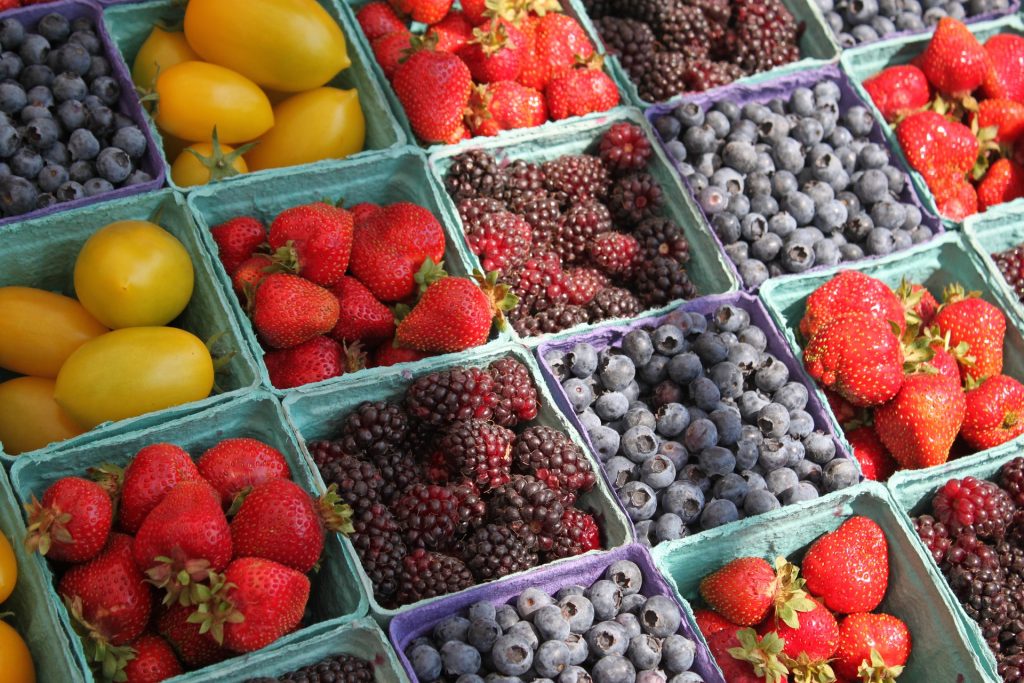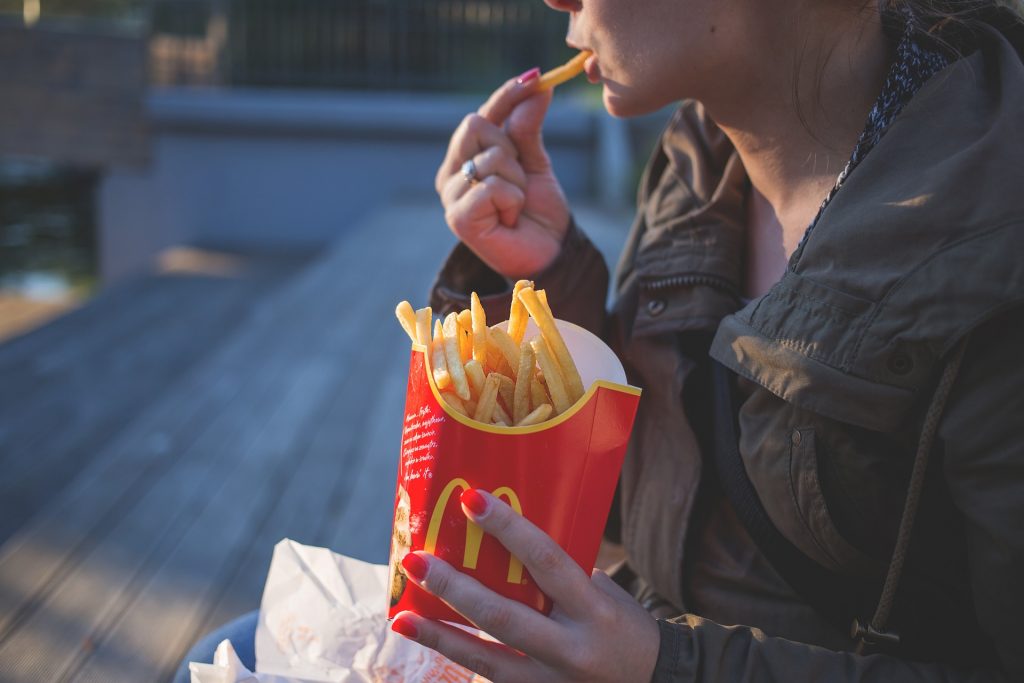The average American house hold spends $6,600 on groceries every year — that’s $550 a month!. Are you doing all you can to make sure you’re getting the healthiest foods for your dollar?
It can cost a lot to eat whole, healthy foods. In fact, the Harvard School of Public Health found that eating a diet rich in fruits and vegetables can cost about $2,000 more per year. But the real question is can you afford not to? With heart disease, cancer, and diabetes all on the rise, spending the cash now on fresh foods could save you big bucks on medical bills throughout your lifetime.
This increased food expense is all the more reason to identify ways to make your money stretch. The most obvious area for savings is to eliminate food waste. Americans throw out $640 worth of groceries every year. Reduce this waste, and you’ve recouped a huge chunk of your budget.
Still, you can always pick up a few points on how to spend wisely and make your money stretch at the grocery store. Here are 18 tips for eating healthy at home while saving money at the grocery store.
1. Plan your meals and stick to your grocery list
When it comes to saving money at the grocery store, planning your meals for the upcoming week is essential. Set aside 10 minutes at the start of every week to decide what you’re going to cook, then make a list of items you’ll need. Before you buy anything, check to see if you already have any ingredients on this list lingering around the house. You’ll save money and eliminate expensive food waste.
Never walk into the grocery store without a plan. It’s vey easy to get sidetracked, and you’ll likely fill your cart with extras that will leave you look into your fridge asking where your money went in a matter of days.
2. Don’t shop when you’re hungry.
You’ve probably heard this one before, but it’s important if you’re going to stick to your list. Shopping hungry is how Oreos happen.
Eat a piece of fruit, a cup of yogurt or another healthy snack before you head out the door to shop.
3. Cook at home.
Americans spend more than 40% of their food budget on dining out or take-out. Cooking at home is one way to save serious cash.
And if you think you’re not saving much because your family is small, consider that you can feed a family of four for the same price that it takes to feed two people at a restaurants. So if you and your partner eat out a lot, know every restaurant trip is costing you two meals at home.
4. Cook large portions.
Take a note from Grandma, and cook like you would for 10 people. Cooking in large quantities means you can get savings by shopping in bulk. You can eat the leftovers for lunch or freeze it in individual portions in zip-top freezer bags. Pull a bag or two out when you’re in a hurry, and voila! No need for expensive, unhealthy frozen dinners either.
Pro tip: Invest in a set of clear containers so you can actually see what leftovers you have sitting your fridge shelf. If you use other recyclables, you’re more likely to gloss over them thinking they’re some other food.
5. Do a “no spend” challenge.
Once every other month, commit to getting creative in the kitchen. Skip grocery shopping entirely and make a weeks work of meals out of whatever you have laying around. You’ll save money on groceries that week, but you’ll also reduce your food waste by using items you have likely forgotten about.
6. Buy whole foods
Most foods will always be less expensive in their less processed form. A block of cheese will always be less per ounce than shredded cheese. A can of beans will always be less than refried beans. Whole grains like brown rice and oats will always cost less than processed cereals.
7. Shop for produce that’s in-season.
There’s a reason strawberries cost $7 in the middle of winter and only $2 in April and May. It’s the law of supply and demand. When produce is at its peak, there is more of it causing the costs to come down. In-season produce also taste so much better than the out-of-season stuff shipped from thousands of miles away, so it’s a true win/win.
8. Buy generic.
Some items brands offer genuinely differ in quality and taste. But then there are others that are the exact same product. Literally. Many foods come from the same factories just get slapped with different labels. Here are foods you should always buy generic to save:
- cereal
- water
- frozen fruits and vegetables
- fresh produce
- canned vegetables or beans
- pasta, rice, and oatmeal
- snack foods
- baking items
- foil
9. Stop buying junk food.
Crackers, cookies, prepackaged meals — you’re not getting much food at all for your money. Save your wallet and your waistline by cutting these foods out of your grocery order. Instead, make veggie chips, granola bars, croutons or other snacks that can satisfy the need to crunch at home.
10. Stop buying sugary drinks.
On average, Americans spend nearly $400 every year on sugary soft drinks and other beverages. You’re basically giving major food manufacturers your hard-earned cash in exchange for a a couple gallons of their sugar water. Skip the Starbucks and brew your own cold brew coffee at home. Make your own Kombucha. Or create your own home brewed ice tea. You can control what goes in them, and you can save a ton.
11. Replace meat with other proteins.
Meatless Monday is great for the environment, but it’s also great for your wallet. Replace a few meals each week with other non-meat protein-rich foods like eggs, quinoa, chia seeds, almonds, lentils, tofu, tempeh, edamame, chickpeas or other varieties of beans, nuts and nut butters.
If you’re looking for protein-rich veggies, pick up some broccoli, spinach, asparagus, artichokes, potatoes, sweet potatoes or Brussels sprouts.
Fruits don’t pack the protein that veggies or beans do, but if you’re looking for higher protein fruits anyway, guava, mulberries, blackberries, nectarines, and bananas boast the most.
12. Follow the “Clean 15 and Dirty Dozen.”
You don’t have to go all organic if you’re looking to save. The Environmental Working Group creates an annual list of the dirtiest produce — that is, the produce covered in the most pesticides. These are the fruits and veggies you should definitely buy organic.
A quick tip is that if you eat the outside skin (strawberries, stone fruits, spinach, potatoes, apples), go organic. If it’s encased in a peel (pineapple, avocado), you can pass.
This is the best way to wash pesticides off of your produce.
13. Buy local and join a CSA.
Eliminating the middleman grocery store means more savings for you. Consider joining a CSA (Community Supported Agriculture). They’re run by local farmers who will deliver fresh produce to your door or another nearby pick-up spot. These are a total steal because you get tons of produce for a fraction of the cost you would at the grocery store, plus you’re supporting a local family. For a list of CSAs in your area, try LocalHarvest.org.
15. Buy frozen fruits and vegetables
There is a myth out there that frozen fruits and vegetables are less nutritious — this is not true. In fact, many can be more nutritious because they are flash frozen right after being picked. If you find you’re tossing lots of produce in the trash, consider shopping in the frozen fruits and veggies aisle.
16. Buy in bulk.
Buy anything you can in bulk, then portion it out yourself. You’ll save all kinds of money and make less trash, too!
17. Grow your own produce.
Is there anything better than seeing that first tomato turn red in August? Growing your own produce is a great way to cut down on grocery cost — particularly with herbs. If you’re a fan of cooking with basil, rosemary, mint or fresh oregano, you can shell out hundreds of dollars every year at the grocery store. Growing these alone will save big buck and also help your cooking stay flavorful without adding a lot of excess salt.
18. Use coupons wisely
If you weren’t going to buy the food item anyway, the coupon isn’t saving you anything. Manufacturers know how to get you to spend extra money, and they’ll offer you just the right coupon at just the right time — but resist! You can spend tons of money “saving money” by buying these types of items. Stick with the perimeter of the grocery store. If you get a coupon for something in produce, meat (not processed meat), or dairy, it’s probably worth using.
Also see, 10 ways to start a healthier lifestyle.







